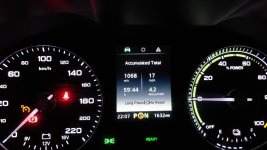View attachment 2037
This is a snippet from the Australian ZS EV brochure, download from the website just now.
Can anyone spot the inconsistency?
Ok here we go: 18.6 × 2.63 = 48.918. That means, for the WLTP range to be realistic with the given WLTP efficiency, our battery would need to have a usable capacity of 49kWh. Not a stated capacity of 44.5kWh and an actual usable capacity of 40kWh.
Irrespective of how the actually achievable range is affected by speed, temperature, wind, driving style, this shows that we are fighting a losing battle.
The question I have: any plausible explanation? Or simply fraud with the stated WLTP range?
Perhaps that number should be 215 km, which would match the actual real world experience of so many of us. Maybe it's not that the WLTP test is an unrealistic lab test, never seen in real life. Maybe MG just fudged some numbers? If they did, I believe in Australia at least, given our strong consumer laws, they'd be in a lot of trouble.
Oh, btw: I am a little over halfway in a 4500km road trip that tests the vehicle to the max. In perfect conditions, moderate temperatures and no wind or tailwinds, no elevation changes, I only manage to get close to the WLTP (and GOM) range if I drop my speed to a low 85km/h. Battery appears healthy, minimal difference between lowest and highest cell voltage.
